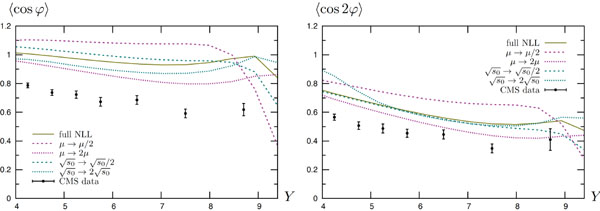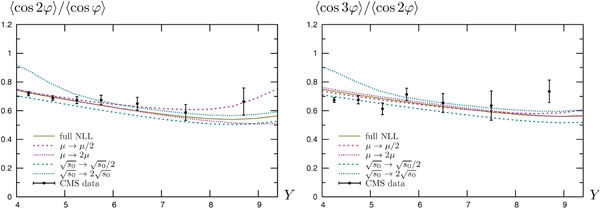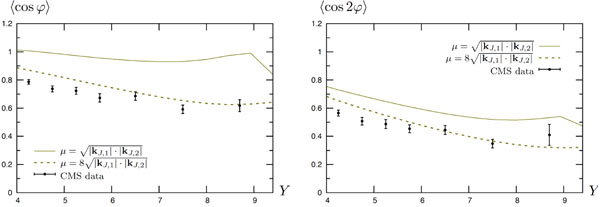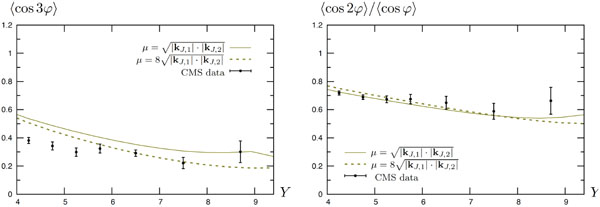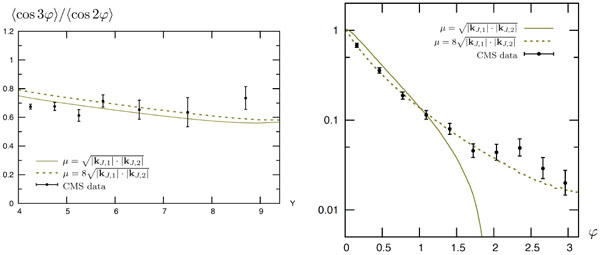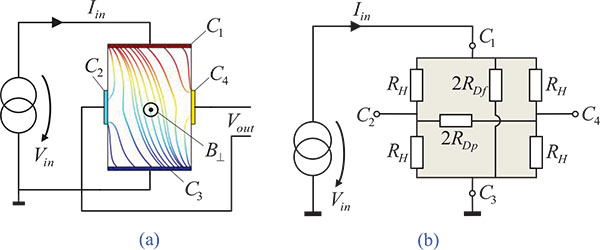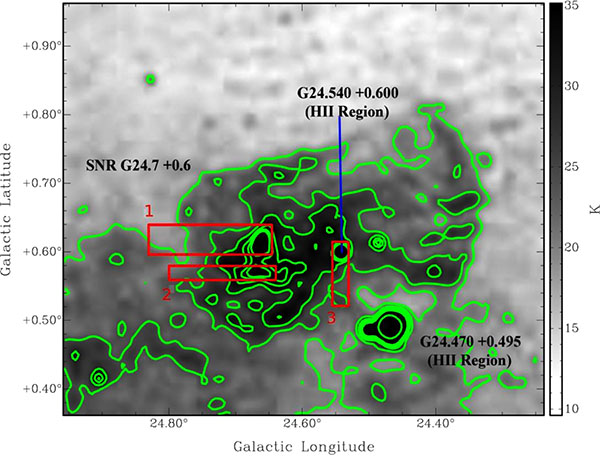RESEARCH ARTICLE
Can One Use Mueller-Navelet Jets at LHC as a Clean Test of QCD Resummation Effects at High Energy?§
Bertrand Ducloué1, Lech Szymanowski2, Samuel Wallon1, 1, *
Article Information
Identifiers and Pagination:
Year: 2014Volume: 1
Issue: Suppl 1: M13
First Page: 79
Last Page: 85
Publisher Id: PHY-1-79
DOI: 10.2174/1874843001401010079
Article History:
Received Date: 25/11/2013Revision Received Date: 24/01/2014
Acceptance Date: 25/01/2014
Electronic publication date: 31/12/2014
Collection year: 2014
open-access license: This is an open access article licensed under the terms of the Creative Commons Attribution Non-Commercial License (http://creativecommons.org/licenses/by-nc/3.0/) which permits unrestricted, non-commercial use, distribution and reproduction in any medium, provided the work is properly cited.
Abstract
The measurement of azimuthal correlations of Mueller-Navelet jets is generally considered as a decisive test to reveal the effect of BFKL dynamics at hadron colliders. The first experimental study of these correlations at the LHC has been recently performed by the CMS collaboration. We show that the ratios of cosine moments of the azimuthal distribution are successfully described within our next-to-leading logarithmic BFKL treatment. The whole set of CMS data for the azimuthal correlations can also be consistently described, provided that one uses a larger renormalization/factorization scale than its natural value. PACS Numbers: 12.38.Cy, 12.38.Qk, 13.85.Hd.
1. INTRODUCTION
The understanding of the high energy limit of QCD, in the so-called perturbative Regge limit, has been the subject of many studies. Many observables have been suggested to test these dynamics, based on inclusive [1], semi-inclusive [2] and exclusive processes [3]. In this limit, the smallness of the strong coupling  can be compensated by large logarithmic enhancements of the type
can be compensated by large logarithmic enhancements of the type  which have to be resummed, giving rise to the leading logarithmic (LL) Balitsky-Fadin-Kuraev-Lipatov (BFKL) Pomeron [4]. Mueller and Navelet proposed to study the production of two jets with a large rapidity separation at hadron colliders [5]. In a pure leading order collinear treatment, these two jets would be emitted back to back, while a BFKL approach allows some emission between these jets which should lead to a larger cross section and lower angular correlation of the jets. We present results of a full next-to-leading logarithmic (NLL) analysis, in which the NLL corrections are included for the BFKL Green's function [6] and the jet vertices [7, 8].
which have to be resummed, giving rise to the leading logarithmic (LL) Balitsky-Fadin-Kuraev-Lipatov (BFKL) Pomeron [4]. Mueller and Navelet proposed to study the production of two jets with a large rapidity separation at hadron colliders [5]. In a pure leading order collinear treatment, these two jets would be emitted back to back, while a BFKL approach allows some emission between these jets which should lead to a larger cross section and lower angular correlation of the jets. We present results of a full next-to-leading logarithmic (NLL) analysis, in which the NLL corrections are included for the BFKL Green's function [6] and the jet vertices [7, 8].
In the following we will focus on the azimuthal correlations  [9] and ratios of these observables, as well as on the azimuthal distribution, at a center of mass energy
[9] and ratios of these observables, as well as on the azimuthal distribution, at a center of mass energy  TeV, which have been measured recently at the LHC by the CMS collaboration [10]. We make some comparison of our results [11] with these data and investigate the dependency on the various scales, including the renormalization scale. comparison of our results [11] with these data and investigate the dependency on the various scales, including the renormalization scale.
TeV, which have been measured recently at the LHC by the CMS collaboration [10]. We make some comparison of our results [11] with these data and investigate the dependency on the various scales, including the renormalization scale. comparison of our results [11] with these data and investigate the dependency on the various scales, including the renormalization scale.
2. BASIC FORMULAS
Let us consider, as shown on Fig. (1), two hadrons colliding at a center of mass energy . Relying on the collinear factorization, the differential cross section reads
. Relying on the collinear factorization, the differential cross section reads
 |
Fig.(1). Kinematics of the process. |

 (1)
(1)
where kJ,1, kJ,2 are the transverse momenta of the jets, yj,1 and yj,2 their rapidities and fa (fb) are the parton distribution functions (PDFs) of a parton a (b) in the according proton. In this expression, the partonic cross section can be expressed as

 (2)
(2)
where  and
and  are the azimuthal angles of the jets,
are the azimuthal angles of the jets, 
 is the jet vertex initiated by the parton a (b) and
is the jet vertex initiated by the parton a (b) and  is the BFKL Green's function which depends on
is the BFKL Green's function which depends on  . For further use, it is convenient to introduce the coefficients
. For further use, it is convenient to introduce the coefficients  , defined as
, defined as
 (3)
(3)
such that
 (4)
(4)
and
 (5)
(5)
In Eq. (3),  is defined as
is defined as
 (6)
(6)
with  being the LL BFKL eigenfunctions
being the LL BFKL eigenfunctions
 (7)
(7)
At LL accuracy, the eigenvalue  of the BFKL kernel is
of the BFKL kernel is
 (8)
(8)
with
 (9)
(9)
where  ,
,  and the vertex is
and the vertex is
 (10)
(10)
with CA for a = g and CFfor a = q. At NLL, despite the fact that the En,v are not eigenfunctions of the kernel anymore due to conformal invariance breaking terms, it is still possible to use them, the price to pay being an explicit dependency on kJ,1 and kJ,2 [12-14]:

 (11)
(11)
with  and
and  The expression for the NLL corrections to the Green's function resulting in
The expression for the NLL corrections to the Green's function resulting in  can be found in Eq. (2.17) of [11]. The expressions of the NLL corrections to the jet vertices are quite lengthy and will not be reproduced here. They can be found in [15], as extracted from [7] after correcting a few misprints. They have been recently reobtained in [8]. In the limit of small cone jets, they have been computed in [16] and applied to phenomenology in [17, 18]. Here we use the cone algorithm with a size of
can be found in Eq. (2.17) of [11]. The expressions of the NLL corrections to the jet vertices are quite lengthy and will not be reproduced here. They can be found in [15], as extracted from [7] after correcting a few misprints. They have been recently reobtained in [8]. In the limit of small cone jets, they have been computed in [16] and applied to phenomenology in [17, 18]. Here we use the cone algorithm with a size of  . Note, however, that using the kt or the anti-kt algorithm leads to negligible changes in our predictions. Our calculation depends on the renormalization scale
. Note, however, that using the kt or the anti-kt algorithm leads to negligible changes in our predictions. Our calculation depends on the renormalization scale  , the factorization scale
, the factorization scale  and the energy scale
and the energy scale  . In the following we set
. In the following we set  . We choose the “natural” value
. We choose the “natural” value  for
for  and
and  , and vary these scales by a factor of 2 to estimate the scale uncertainty of our calculation. We use the MSTW 2008 PDFs [19] and a two-loop running coupling. We also include collinear improvement to the Green's function as was suggested in [20] and extended for
, and vary these scales by a factor of 2 to estimate the scale uncertainty of our calculation. We use the MSTW 2008 PDFs [19] and a two-loop running coupling. We also include collinear improvement to the Green's function as was suggested in [20] and extended for  in [13, 14, 21].
in [13, 14, 21].
3. RESULTS: ASYMMETRIC CONFIGURATION
In [11] we performed a detailed study of several BFKL scenarios, from a pure LL approximation (LL Green's function and leading order jet vertex) to a full NLL calculation (NLL Green's function and NLL jet vertex). The main conclusion is that there is a dramatic effect when passing from a mixed treatment, which combines LL vertices with NLL Green's function, to a full NLL approach, of magnitude similar to the one when passing from a pure LL result to the mixed treatment; the inclusion of NLL corrections inside the jets vertices is therefore essential. Note that the effect of collinear improvement in the NLL Green's function is very small when using the NLL jet vertices. The inclusion of the whole set of NLL corrections leads to decorrelation effects which are much smaller than expected. Still, there remains a sizable difference between the full NLL approach and the fixed order predictions at next-to-leading order (NLO) for the ratios  and
and  , when taking into account theoretical uncertainties.
, when taking into account theoretical uncertainties.
To study the need for high-energy resummation with respect to fixed order treatments, one should, however, pay attention to the fact that these fixed order calculations have instabilities when the lower cuts on the transverse momenta of the jets are identical. Thus, at the moment, it is not possible to make a direct comparison between these two predictions in an asymmetric configuration and the data of [10], which have been extracted in a symmetric configuration. Still, one can compare our BFKL calculation with the fixed order NLO code Dijet [22] in an asymmetric configuration with the following cuts, which could be implemented by CMS:


 (12)
(12)
This is illustrated for the ratios  and
and  in Fig. (2). In this figure, we show the variation of our NLL result when varying
in Fig. (2). In this figure, we show the variation of our NLL result when varying  and
and  by a factor of 2 and compare it with the Dijet prediction. Here the fixed order NLO calculation is significantly above the full NLL BFKL calculation. These observables are quite stable with respect to the scales so that the difference between NLL BFKL and fixed order NLO does not vanish when we take into account the scale uncertainty.
by a factor of 2 and compare it with the Dijet prediction. Here the fixed order NLO calculation is significantly above the full NLL BFKL calculation. These observables are quite stable with respect to the scales so that the difference between NLL BFKL and fixed order NLO does not vanish when we take into account the scale uncertainty.
4. RESULTS: SYMMETRIC CONFIGURATION
In this section, we compare our results with the data recently obtained by CMS [10], for a symmetric configuration (identical lower cut for the transverse momenta of the jets) and with cuts

 (13)
(13)
These are the cuts used by CMS in [10], with the exception that for numerical reasons we have to set an upper cut on the transverse momenta of the jets. We have checked that our results do not depend strongly on the value of this cut as the cross section is strongly peaked near the minimum value allowed for kJ,1 and kJ,2. This enables us to compare our predictions with LHC data.
We begin our analysis with the azimuthal correlations  . In Figs. (3, 4) we show the variation of
. In Figs. (3, 4) we show the variation of  ,
,  and
and  with respect to the rapidity separation between the two jets Y within a full NLL framework. We display the theoretical uncertainty obtained when varying
with respect to the rapidity separation between the two jets Y within a full NLL framework. We display the theoretical uncertainty obtained when varying and
and  by a factor of 2 and we compare these predictions with CMS data (black dots with error bars). We see that NLL BFKL predicts a larger correlation than seen in the data, but these observables are strongly dependent on the value of the scales.
by a factor of 2 and we compare these predictions with CMS data (black dots with error bars). We see that NLL BFKL predicts a larger correlation than seen in the data, but these observables are strongly dependent on the value of the scales.
The extraction of ratios of the previously mentioned observables was also performed in [10]. In Fig. (5) we show results for  and
and  . The effect of NLL corrections to the vertices is important (see [11, 23] for detailed comparisons), but these observables are more stable with respect to
. The effect of NLL corrections to the vertices is important (see [11, 23] for detailed comparisons), but these observables are more stable with respect to  and
and  than the previous ones. The agreement with the data is very good over a large
than the previous ones. The agreement with the data is very good over a large  range.
range.
Our code allows us to perform a complete study of the azimuthal distribution [24], which is most directly accessible in experiments, while more difficult to evaluate numerically than the individual moments discussed above. It is defined as
 (14)
(14)
If one tries to compare the full NLL BFKL prediction with CMS data, we fail to describe the distribution for large values of  , corresponding to nearside jets configurations, when taking a “natural” scale
, corresponding to nearside jets configurations, when taking a “natural” scale  We have seen also in Figs. (3, 4) that the data is better described if we use larger values of µ. Indeed, if we let the renormalization/factorization scale vary by more than a factor of 2, one can see that the whole set of CMS data can be very well described within the full NLL BFKL approach with a scale of the order of
We have seen also in Figs. (3, 4) that the data is better described if we use larger values of µ. Indeed, if we let the renormalization/factorization scale vary by more than a factor of 2, one can see that the whole set of CMS data can be very well described within the full NLL BFKL approach with a scale of the order of  This is illustrated in Figs. (6-8).
This is illustrated in Figs. (6-8).
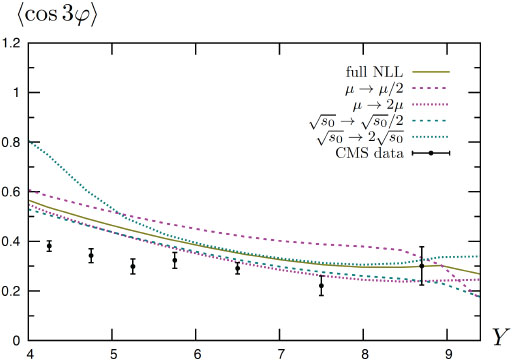 |
Fig.(4). Comparison of the full NLL BFKL calculation including the scale uncertainty with CMS data, using symmetric cuts defined in Eq. (13), for <cos 3φ> as a function of the rapidity separation Y. |
CONCLUSION
We have been able to compare the predictions of our full NLL BFKL calculation of Mueller-Navelet jets with data taken at the LHC thanks to the measurement presented by the CMS collaboration. This comparison shows [23] that for the observables  a pure LL BFKL treatment or a mixed treatment where the NLL Green's function is used together with LL vertices cannot describe the data. On the other hand, the results of our complete NLL calculation do not agree very well with the data when the scales involved, are fixed at their “natural” value. The ratios of these observables are very stable with respect to changes of the scales and our calculation describes the data quite well.
a pure LL BFKL treatment or a mixed treatment where the NLL Green's function is used together with LL vertices cannot describe the data. On the other hand, the results of our complete NLL calculation do not agree very well with the data when the scales involved, are fixed at their “natural” value. The ratios of these observables are very stable with respect to changes of the scales and our calculation describes the data quite well.
The azimuthal distribution
has also been measured by CMS, and its description based on our full NLL BFKL
treatment with a natural renormalization/factorization scale fails for the
nearside configurations. This description, as well as the description of

 and
and  is
very successful provided one takes a large renormalization/factorization scale,
much larger than the natural one. We have shown recently [25] that this can be
understood when fixing the renormalization scale according to the physically
motivated Brodsky-Lepage-Mackenzie procedure [26], in the spirit of [27, 28],
which indeed leads to a very good description of the CMS data.
is
very successful provided one takes a large renormalization/factorization scale,
much larger than the natural one. We have shown recently [25] that this can be
understood when fixing the renormalization scale according to the physically
motivated Brodsky-Lepage-Mackenzie procedure [26], in the spirit of [27, 28],
which indeed leads to a very good description of the CMS data.
To find a fully conclusive evidence for the need of BFKL-type
resummation in Mueller-Navelet jets, a comparison with a fixed order (NLO)
treatment would be needed. We have compared our predictions with the ones
obtained with the fixed order NLO code Dijet in an asymmetric configuration, as
required to get stable results in a fixed order approach. We found that for the
observables  no significant difference is observed
when taking into account the
scale uncertainties. On the other hand, for
no significant difference is observed
when taking into account the
scale uncertainties. On the other hand, for
 and
and  the two calculations lead to
noticeably different results. Since these observables are quite stable with
respect to scale variations, they are well-suited to study resummation effects
at high energy. We thus, believe that an experimental analysis with different
lower cuts on the transverse momenta of the jets would be of great interest.
the two calculations lead to
noticeably different results. Since these observables are quite stable with
respect to scale variations, they are well-suited to study resummation effects
at high energy. We thus, believe that an experimental analysis with different
lower cuts on the transverse momenta of the jets would be of great interest.
CONFLICT OF INTEREST
The authors confirm that this article content has no conflict of interest.
ACKNOWLEDGEMENTS
We thank Michel Fontannaz, Cyrille Marquet and Christophe Royon for providing their codes and for stimulating discussions. We warmly thank Grzegorz Brona, David d'Enterria, Hannes Jung, Victor Kim and Maciej Misiura for many discussions and fruitful suggestions on the experimental aspects of this study.
We thank the organizers, the Tel Aviv French ambassy and the French CEA (IPhT and DSM) for support. This work is supported by the Joint Research Activity Study of Strongly Interacting Matter (HadronPhysics3, Grant Agreement no. 283286) under the 7th Framework Programme of the European Community and by the Polish Grant NCN No. DEC-2011/01/B/ST2/03915.


